Opening Reception
Wednesday, September 10, 6–8PM
Jesse Chun
Taína Cruz
Hamishi Farah
Mark Lombardi
Adam Putnam
Mark van Yetter
Escapements brings together drawings by artists whose works navigate the space between opposing worlds, constructing psycho-social metaphors through gesture, mark-making, and image. The exhibition traces tensions between heaven and earth, presence and absence, freedom and constraint, and self and society—revealing the delicate mechanisms that mediate human experience.
Curated by 80WSE Curator Howie Chen.
Produced by Jon Huron.
Erika Airikh and Ariel He, Curatorial Assistants.
Jesse Chun works across moving image, drawing, sculpture, and sound, centering on her concept of “unlanguaging.” Drawing from Korean folk and shamanic traditions, and from diasporic and familial archives, she has developed a vocabulary that evokes alternate semiotics and untranslatable temporalities. Her drawings feature hand-cut asemic scripts on hanji (Korean mulberry paper), informed by talismanic paper-cutting and her grandmother’s Buddhist writing practice. In 시: concrete poem (no.041924), 2024, thousands of graphite lines, cut patterns, and shadows form a meditation on talismanic traditions, mediating spiritual and material worlds. In score for unlanguaging, 2023–ongoing, Roman alphabet stencils fragment and reimagine English to chart symbolic constellations, later activated through performance and acts of open translation.
Taína Cruz’s multidisciplinary practice spans painting, sculpture, and video, drawing on pop imagery, online subculture, and personal archives to create a surreal visual language. Blending satire, horror, and seduction, her avatars—elves, goblins, and sirens—bring together contemporary image worlds, art history, and post-colonial narratives, serving as allegories for mythology, selfhood, and transformation. In recent drawings, these figures emerge gradually, their slow formation generating a charged stillness with bodies suspended between tenderness and disappearance, or bracing with a psychic anticipation as if the body senses what the mind has yet to comprehend.
Hamishi Farah’s practice unfolds through conceptual and figurative painting, bringing together subjects that invoke what he terms the “colonial libido,” including who is seen as human and the imprint of Christian iconography in imaging and fetishizing marginal suffering. Painting becomes a critical site in his practice, mediating systems of power through visual allegory. Most recently, Farah has turned his attention to explorations of Christian martyrdom, with his latest paintings taking Saint Sebastian as a central subject. These works depict the saint’s arrow-pierced body as an enduring Renaissance motif and an askew symbol of resilience, strength, and transcendence within our contemporary moment.
Mark Lombardi developed a drawing-based practice known for intricate “narrative structures” that map complex networks of power, institutions, and capital rendered in a web of lines and notations. Study for World Finance Corporation 7th Version, 1999, offers a rare glimpse into a study drawing based on his extensive research, using syndicated news and public sources to chart the role of the World Finance Corporation, a global conglomerate tied to trafficking Colombian drugs and laundering the profits through different entities, revealing the complex imbrications of financial, political, and criminal networks.
Adam Putnam’s multidisciplinary practice spans photography, drawing, sculpture, film, and performance, investigating the boundaries between architecture, nature, the physical body, and the internal self. His imagery frequently returns to motifs such as holes, obelisks, and towers—forms that collapse distinctions between interior and exterior and presence and absence. Visualizations (Escapement Annex), 2025, a series of postcard-sized ink drawings, builds on earlier series that form an archaic diagram of the unconscious. A new drawing from this work will be displayed each day of the exhibition.
Mark van Yetter engages in drawing and painting, realized in pastel and oil on paper and often presented in artist-made frames. His compositions elude simple narratives, inviting contemplative engagement with the depicted subjects and the compressed spaces they inhabit. Embedded in van Yetter’s tableaus, landscapes, and portraits are pointed reflections on society, including culture, power, alienation, and modernity.
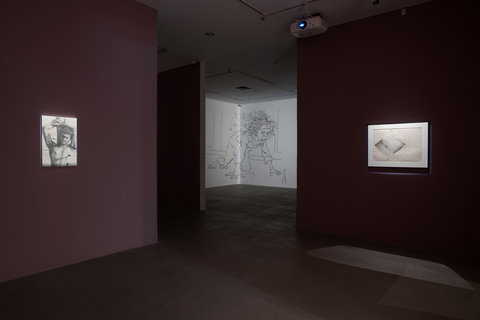
Hamishi Farah, Taína Cruz, Mark Lombardi (L to R)
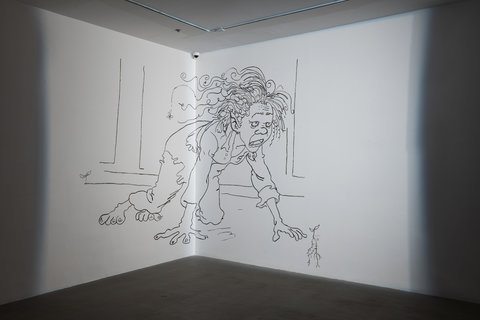
Taína Cruz
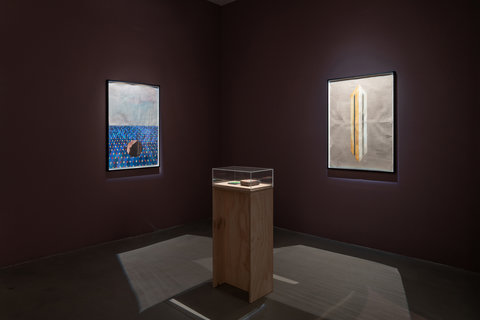
Adam Putnam
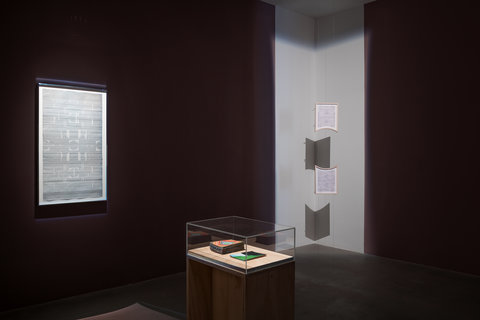
Jesse Chun, Adam Putnam (foreground)
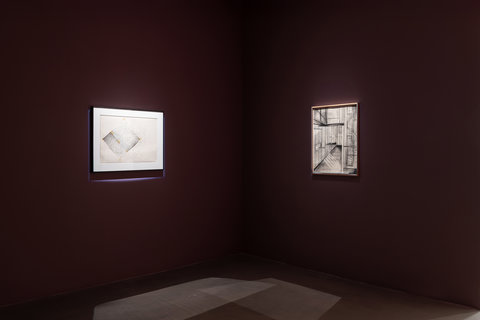
Mark Lombardi, Mark van Yetter (L to R)